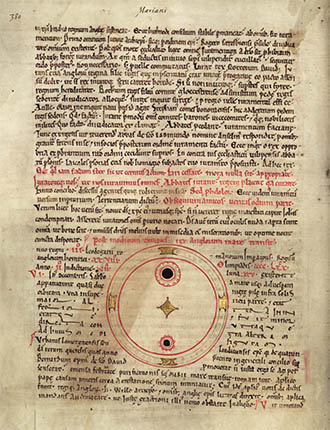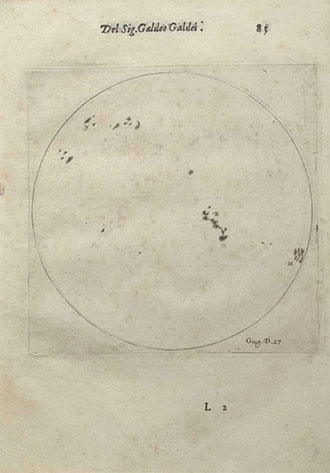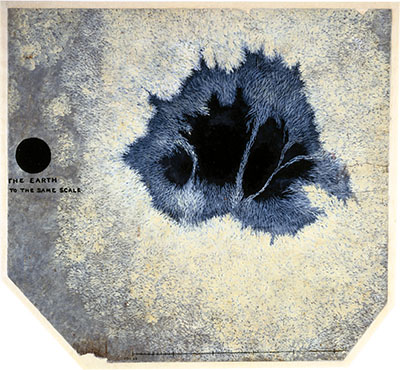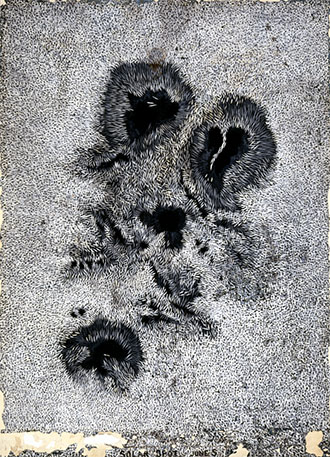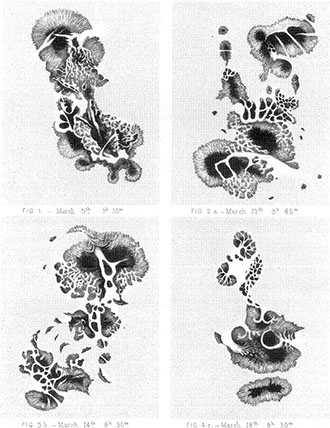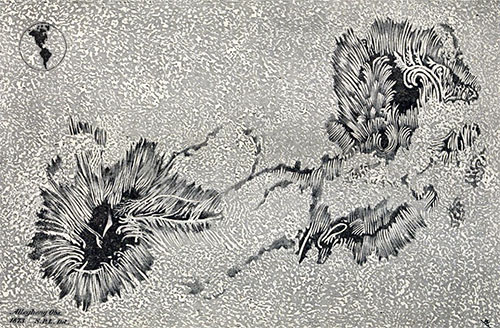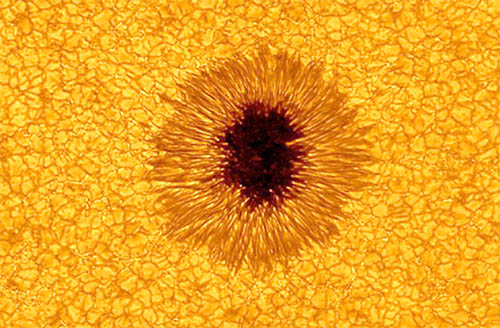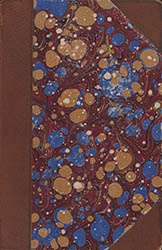119
A Typical Sunspot
Samuel Langley
In the cold, clear air of 23–24 Dec 1873 Samuel Pierpont Langley, then director of the Allegheny Observatory and professor at the Western University of Pennsylvania, was viewing the sun using the observatory’s 13-inch Fitz-Clark refractor and created this remarkably detailed drawing of a single sunspot. The drawing, now a solar astronomy classic, was widely reprinted. The version above, a steel engraving by Samuel Sartain of Philadelphia, was including as the frontispiece in Charles Young’s textbook The Sun.1
Langley would go on to be the third Secretary of the Smithsonian and may be best remembered for his failed attempts at powered flight.
Of course Langley wasn’t the first to look at sunspots.2 The Chinese astronomer Gan De described a sunspot in 364 BC. Einhard, in his Vita Karoli Magni, describes sunspots appearing at the time of Charlemagne's death around 807 AD. John of Worcester provided the first drawing of a sunspot in his 1157 Chronicles:
Corpus Christi MS 157, Folio 389 3
After the refracting telescope was invented in 1608 pretty much everyone began observing sunspots. Johann Goldsmid (AKA Fabricius), Thomas Harriot, Galileo Galilei and Christoph Scheiner, among others, began recording and publishing their observations. Here’s an example from Galileo’s Istoria e Dimostrazioni:4
27 Jun 1613 observation. Octavo
And here’s one from Scheiner’s Rosa Ursina:5
27 Jun 1613 observation. Octavo
Over the next 200+ years there were thousands of recorded sunspot observations and by the middle of the nineteenth century Victorian astronomers, both amateur and professional, often using telescopes as large as 13 or 15-inches, were producing quite detailed illustrations.
These illustrations were nothing if not artistic, although their scientific accuracy varied. Here are a few oil and distemper paintings by James Nasmyth recorded at Penshurst, Kent:
Sunspot, 1860. NMSI
Solar Spot June 5 1864. NMSI
This pastel drawing was from Angelo Secchi’s influential 1870 Le Soleil:
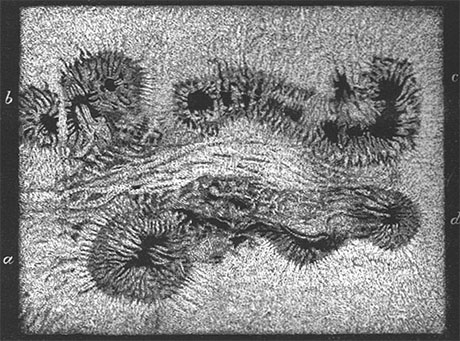
Painter-turned-entomologist-turned-astronomer Étienne Léopold Trouvelot made these drawings in 1873 using Harvard Observatory’s Great refractor:7
Sun Spots
Which brings us to the end of 1873 and back to Langley’s illustration (above). Although he would be the first to admit it’s shortcomings it was nevertheless the most accurate drawing of a sunspot to date. He correctly depicted the filamentous nature of the umbra and penumbra and the granular appearance of the chromosphere. Here is another example from Popular Science Monthly:8
The Photosphere and Sun-Spots
For comparison, consider this photograph taken on 2 Jul 2010 with the 1.6 m New Solar Telescope at the Big Bear Solar Observatory – the most detailed to date:
Today, with dedicated solar observatories and satellites, large-format CCD sensors and complex computer filters you would think that the sunspot illustration would be a thing of the past. But you would be wrong: the Mt. Wilson Observatory still produces a daily drawing.
1. Young, C. A. The Sun. New York: D. Appleton, 1896. This “new and revised edition” included additional information about the newly-discovered element Helium. Here is a scan of the cover in it’s half-leather over marble boards glory:
This particular copy is ex Our Lady of Cincinnati College Library (523.7 Y69s). According to the Date Due label it was checked out once in 1965 and once in 1968. Interestingly, however, most of the book is still uncut.
2. For an extensive overview of historical sunspot observations see Larry Webster’s appropriately named Historical Sunspot Drawing Resource Page.
3. “...on Saturday, 8 December there appeared from the morning right up to the evening two black spheres against the sun. The first was in the upper part and large, the second in the lower and small, and each was directly opposite the other as this diagram shows.” The entire manuscript is available online at Oxford University.
4. Galilei, Galileo. Istoria e Dimostrazioni Intorno Alle Macchie Solari e Loro Accidenti Rome (History and Demonstrations Concerning Sunspots and their Properties). Rome: Giacomo Mascardi 1613. For more information see Rice University’s wonderful Galileo Project.
5. Scheiner, Christoph. Rosa Ursina, sive Sol ex admirando facularum et macularum suarum phoenomenon varius.... Bracciano: Andrea Phaeus, 1626–1630. A unfortunately watermarked copy is available online at the Museo Galileo (IMSS).
6. Secchi, Angelo. Le Soleil. Paris: Gauthier-Villars, 1870.
7. Truvelot’s life and career is so interesting that it deserves it’s own post. In the meantime see Bibliodyssey’s Truvelot Astronomy.
8. Langley, S. P. The Photosphere and Sun-Spots. Popular Science Monthly. 1874 Sept;5: 532–542. The book is available online at the Internet Archive.
2 May 2012 ‧ Illustration

